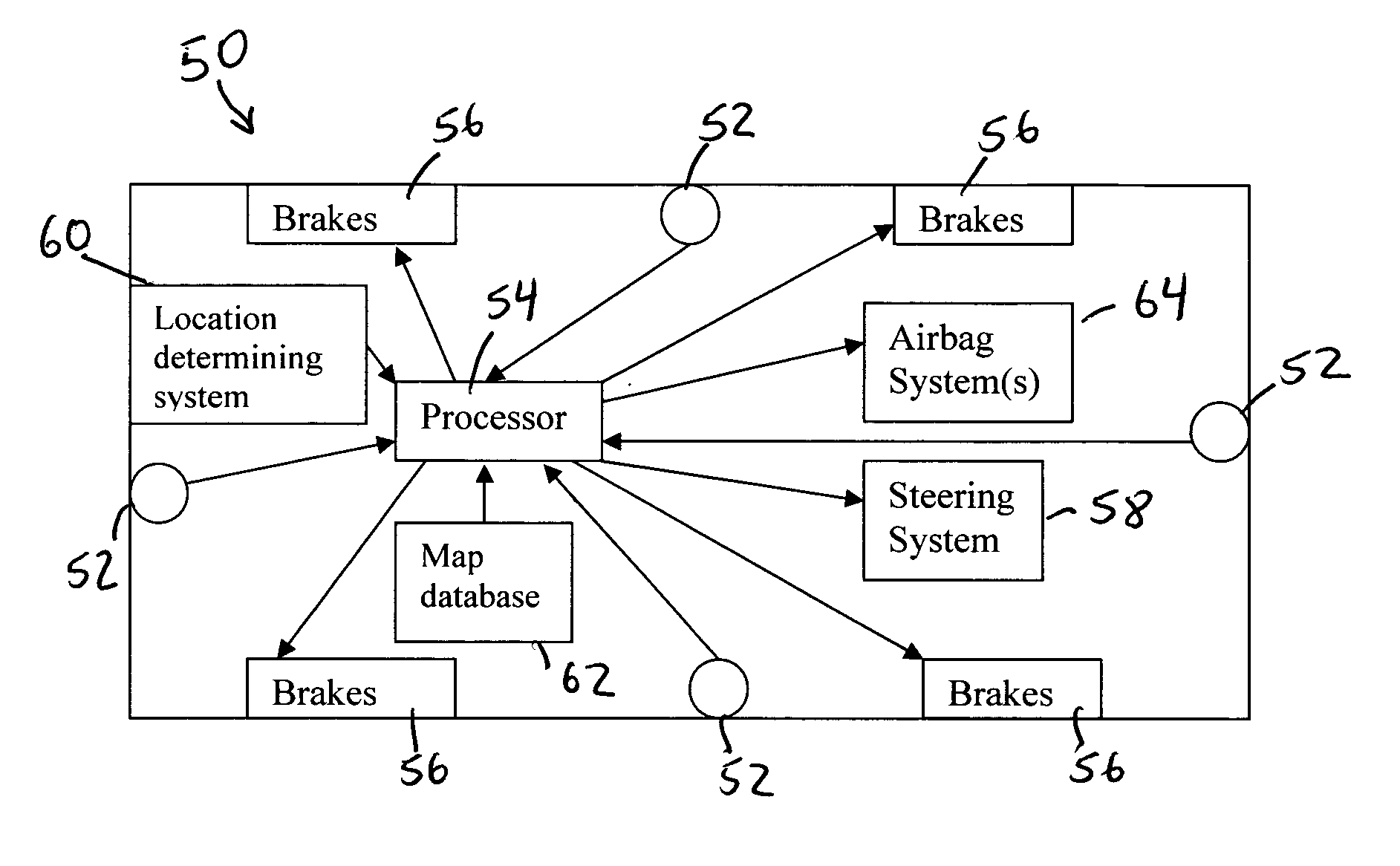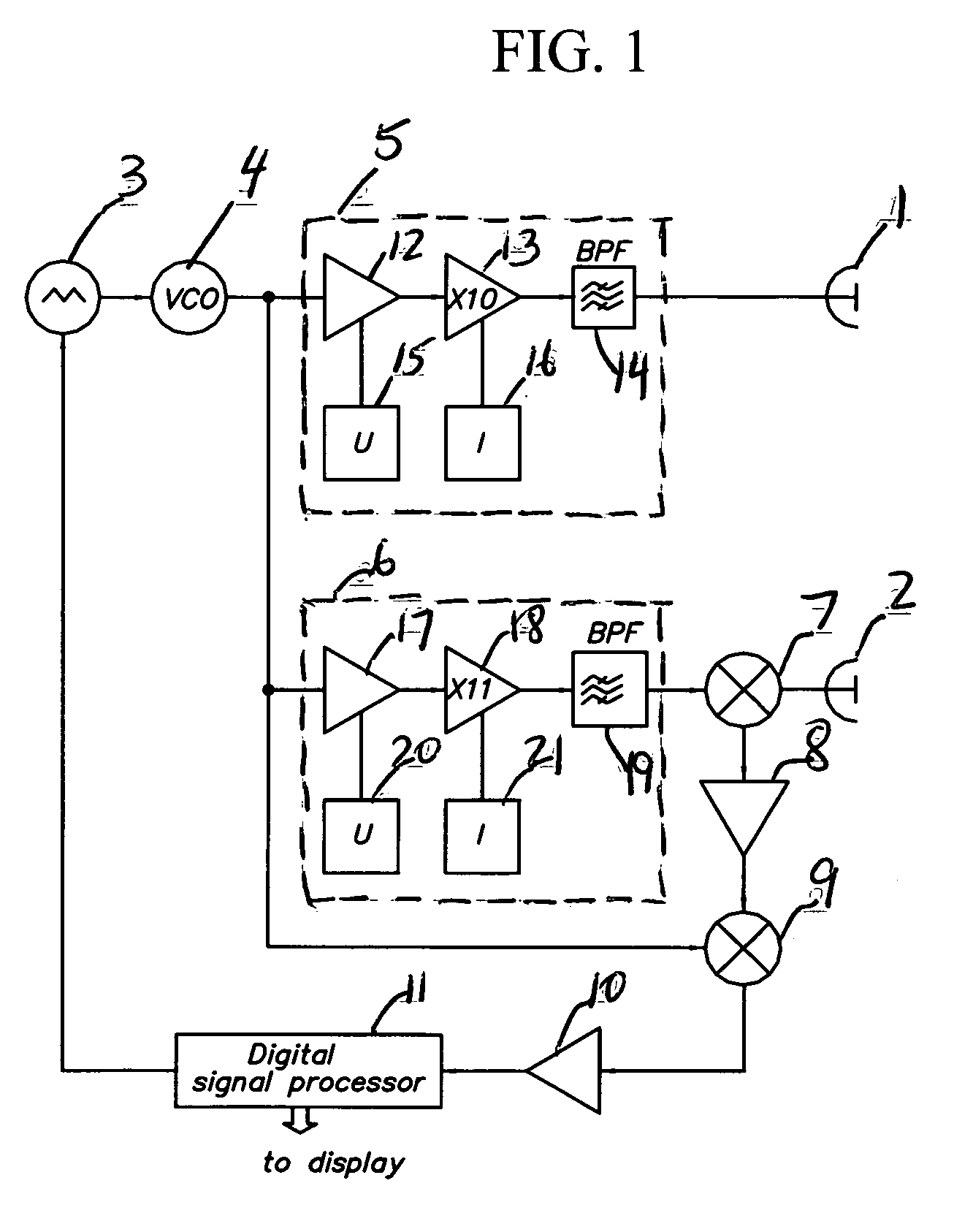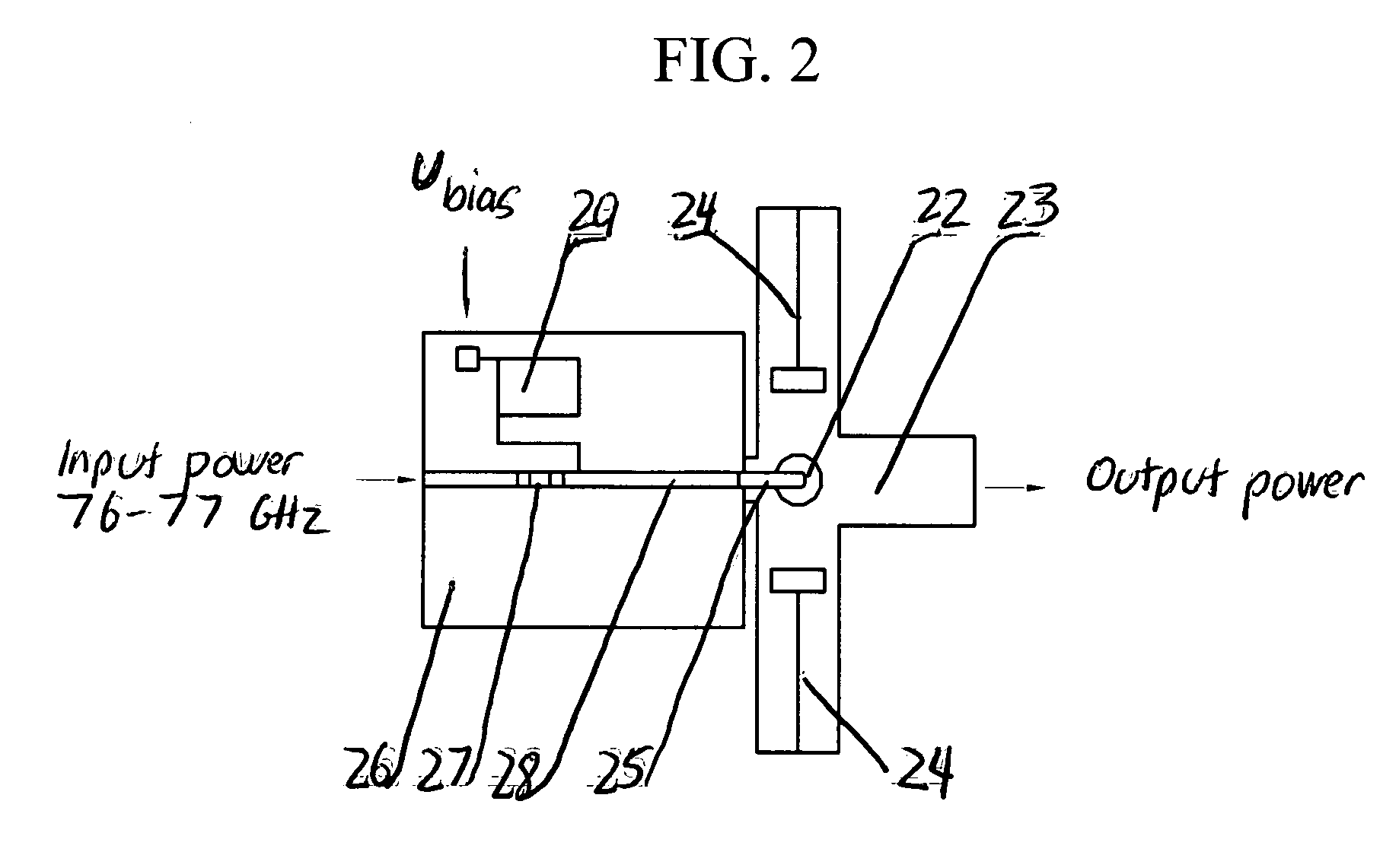Short-range automotive radar transceiver
a transceiver and automotive technology, applied in the field of short-range radars, can solve the problems of low efficiency (about 2%-4%), high cost of assembling and tuning wave-guide diode oscillators, and low phase noise and power output, and achieve low cost of automotive radars, small size and mass of transceivers, and high reproducibility of operating parameters
- Summary
- Abstract
- Description
- Claims
- Application Information
AI Technical Summary
Benefits of technology
Problems solved by technology
Method used
Image
Examples
Embodiment Construction
[0045] 1. Hybrid Integrated Waveguide Transceiver of Automotive Radar with Two Antennas
[0046] 1.1 General Description of the Operation of Radar Transceiver with Two Antennas
[0047] Referring first to FIG. 1, a block diagram of a transceiver operating in the 76-77 GHz frequency range in accordance with the invention is shown. One intended use of this transceiver is as a front-end of short-range FMCW automotive radar. The circuit of this transceiver involves two separate antennas—transmit antenna 1 and receive antenna 2. Use of two separate antennas, which should be adequately isolated from each other, enables a considerable increase in transceiver potential and excludes application of MM-wave isolators. The active MM-wave components of this transceiver operating at 76-77 GHz are highly efficient frequency multiplier modules with high multiplication factor implemented on silicon IMPATT diodes. The main principles of construction of this frequency multiplier over the whole MM-wave ran...
PUM
 Login to View More
Login to View More Abstract
Description
Claims
Application Information
 Login to View More
Login to View More - R&D
- Intellectual Property
- Life Sciences
- Materials
- Tech Scout
- Unparalleled Data Quality
- Higher Quality Content
- 60% Fewer Hallucinations
Browse by: Latest US Patents, China's latest patents, Technical Efficacy Thesaurus, Application Domain, Technology Topic, Popular Technical Reports.
© 2025 PatSnap. All rights reserved.Legal|Privacy policy|Modern Slavery Act Transparency Statement|Sitemap|About US| Contact US: help@patsnap.com



